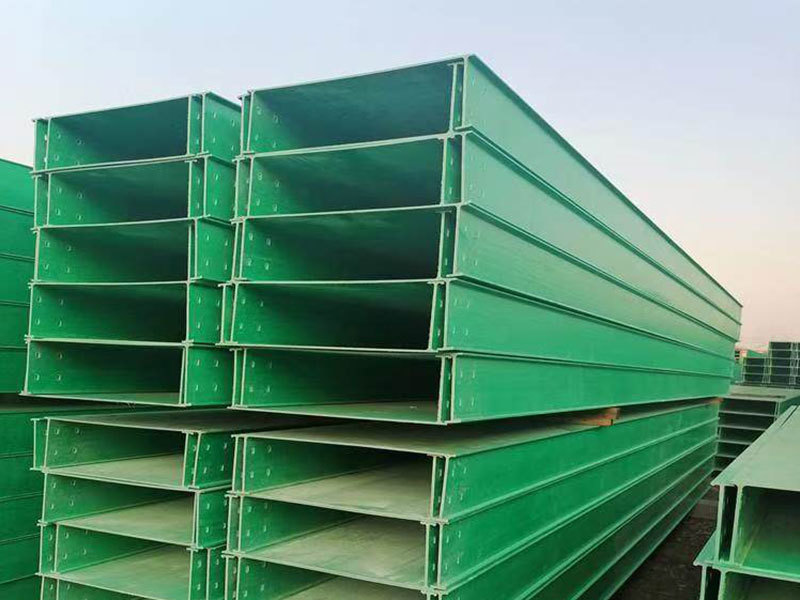How to Select the Right FRP Grating

How to Select the Right FRP Grating
In recent years, fiberglass reinforced plastic (FRP) grating has gained significant popularity across various industries due to its unique properties and benefits. It offers a lightweight, corrosion-resistant alternative to traditional materials such as steel and aluminum. However, selecting the right FRP grating for your specific application can be a daunting task. This article aims to provide a comprehensive guide on how to choose the appropriate FRP grating to meet your needs.
Understanding FRP Grating
Before diving into the selection process, it is essential to understand what FRP grating is and its primary characteristics. FRP grating is made from a composite material that combines fiberglass and resin, resulting in a strong yet lightweight product. Its key advantages include resistance to corrosion, low maintenance requirements, non-conductive properties, and excellent load-bearing capabilities. These features make FRP grating an ideal choice for various applications, including walkways, platforms, and industrial flooring.
Identifying Your Application Needs
The first step in selecting the right FRP grating is to identify the specific requirements of your application. Consider the following factors:
1. Load Requirements: Determine the type of load the grating will need to support. This includes static loads (such as equipment or personnel) and dynamic loads (like moving vehicles). Knowing the load capacity needed will help you choose the right thickness and type of grating.
2. Environmental Conditions: Evaluate the environment where the grating will be installed. Factors such as exposure to chemicals, moisture, UV radiation, and temperature extremes will influence the type of resin used in the grating. For example, a grating exposed to harsh chemicals may require a vinyl ester resin for enhanced chemical resistance.
3. Slip Resistance: Safety is a crucial consideration, especially in industrial settings. Assess the slip resistance requirements for your application. Many FRP gratings come with surface textures designed to provide excellent traction, which is vital in wet or oily environments.
4. Aesthetic Considerations: Depending on the application, you may also need to consider the visual appeal of the grating. FRP grating is available in various colors and finishes, allowing you to select an option that complements your facility's design.
Choosing the Right Type of FRP Grating
Once you have a clear understanding of your application needs, the next step is to choose the right type of FRP grating. There are several types available, each designed for specific applications:
1. Molded FRP Grating: This is the most common type of FRP grating, manufactured by combining fiberglass strands with resin in a mold. Molded grating is known for its high strength-to-weight ratio and is suitable for various applications, including walkways, platforms, and stair treads.
2. Pultruded FRP Grating: Pultruded grating is created by pulling fiberglass strands through a resin bath and then through a heated die. This type of grating is typically stronger and more rigid than molded grating, making it ideal for heavy-duty applications where higher load capacities are required.
3. Custom FRP Grating: If your application has unique requirements, custom FRP grating may be the best option. Manufacturers can tailor the size, shape, and properties of the grating to meet specific needs, ensuring optimal performance in your application.
Evaluating Grating Specifications
After selecting the type of FRP grating, it is essential to evaluate the specifications provided by the manufacturer. Pay attention to the following key specifications:
1. Load Capacity: Check the manufacturer's load tables to ensure the grating can support the intended loads. Make sure to consider both live loads and dead loads in your calculations.
2. Span Length: The span length is the distance between supports. Different types of grating have varying maximum span lengths. Ensure that the span length meets the requirements of your application to avoid excessive deflection or failure.
3. Chemical Resistance: Review the chemical resistance charts provided by the manufacturer to ensure that the grating will withstand exposure to the specific chemicals present in your environment.
4. Fire Rating: If your application is subject to fire safety regulations, check the fire rating of the FRP grating. Some types of grating have enhanced fire resistance, which may be necessary for compliance with safety standards.
Installation Considerations
Selecting the right FRP grating is only part of the process; proper installation is equally crucial for optimal performance. Consider the following installation factors:
1. Support Structure: Ensure that the support structure is designed to accommodate the chosen grating type and its load capacity. The spacing of the supports should align with the manufacturer's recommendations.
2. Fastening Methods: Depending on the application, you may need to use specific fastening methods to secure the grating in place. Consult with the manufacturer for guidance on the appropriate fasteners and installation techniques.
3. Maintenance: While FRP grating requires minimal maintenance, it is essential to establish a routine inspection schedule to identify any signs of wear or damage. Regular cleaning can also help maintain slip resistance and prolong the lifespan of the grating.
Conclusion
Choosing the right FRP grating is a critical decision that can significantly impact the safety, durability, and efficiency of your application. By understanding your specific needs, evaluating different types of grating, and considering essential specifications, you can make an informed choice that meets your requirements. Additionally, proper installation and maintenance will ensure that your FRP grating performs optimally for years to come. Whether for industrial, commercial, or residential use, the right FRP grating can provide a reliable and cost-effective solution for your flooring and access needs.
TAG:
Related Posts
How to Select the Right FRP Grating







